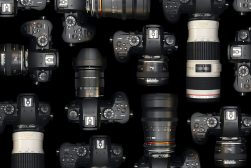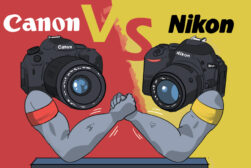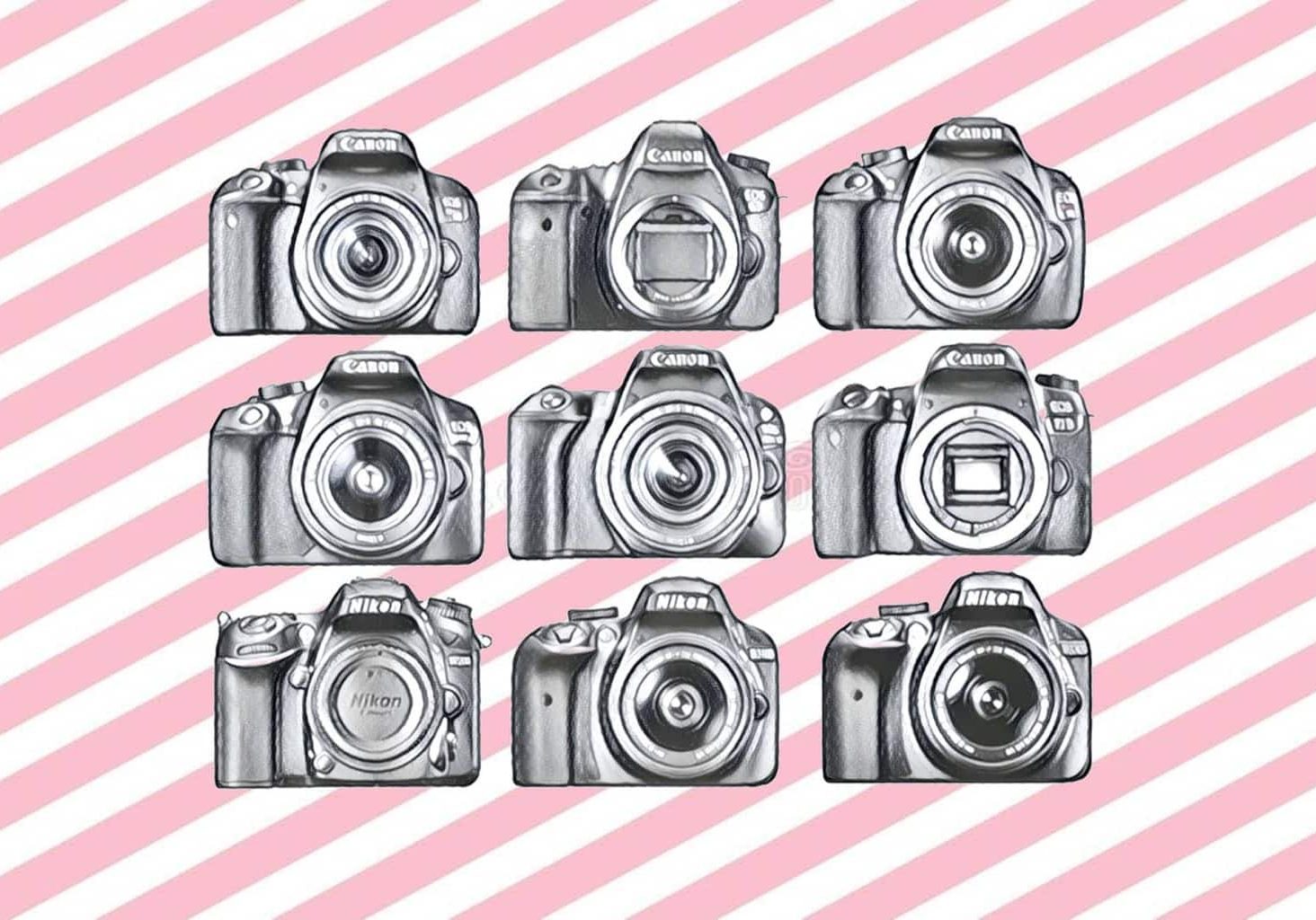
7 Best Entry Level DSLR Cameras for Beginners in 2024
A selection of the best entry level DSLR cameras for beginner photographers or those on a budget. All these entry level DSLRs are far better than you smartphone, so you can get snapping today!
If you’re looking for the best entry-level DSLR camera for starting photography in 2024, this guide has you covered.
Entry-level cameras have come a long way in recent years, with many great features taken from more expensive models.
A good entry-level DSLR should be both easy to use and affordable – perfect for photographers on a budget, or those learning photography.
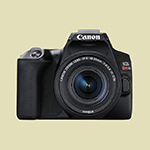
Small, lightweight, feature-packed DSLR that's perfect for those on a budget who need a high quality camera to grow with. Easy to use and excellent value for money.
Even professional photographers love their compactness and simplicity.
(I spent a month with a basic Nikon DSLR camera and was really impressed by it!)
So if you’re in the market for the best DSLR for beginners that won’t break the bank, dive right into our recommendations below.
Top 7 Starter DSLR Cameras for Beginners in 2024
| Image | Product | Details | |
|---|---|---|---|
 | Canon SL3OUR #1 CHOICE |
| View Price → |
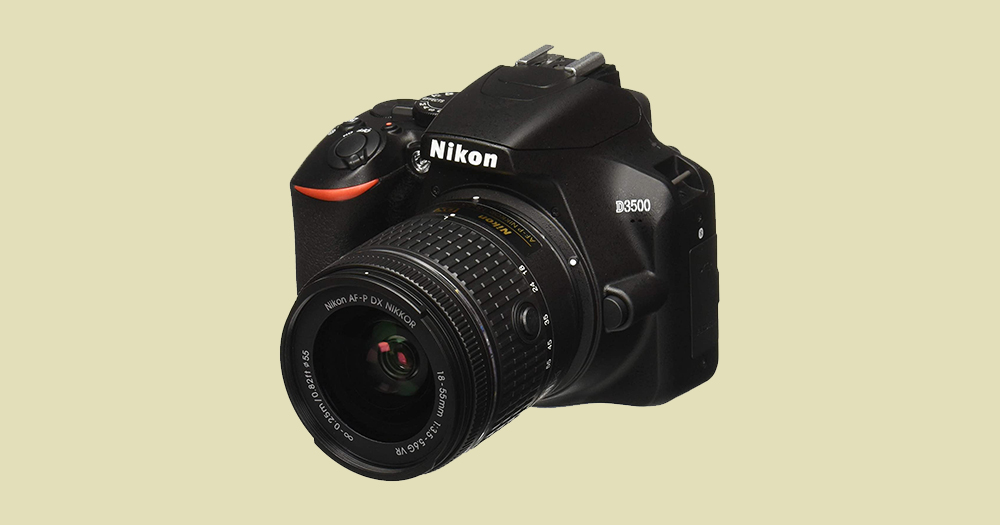 | Nikon D3500GREAT VALUE |
| View Price → |
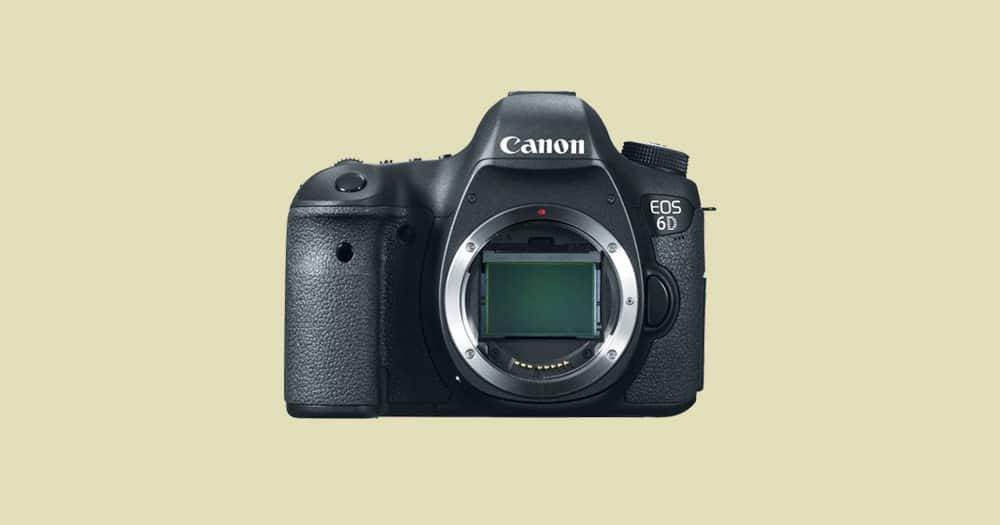 | Canon EOS 6DTOP RATED |
| View Price → |
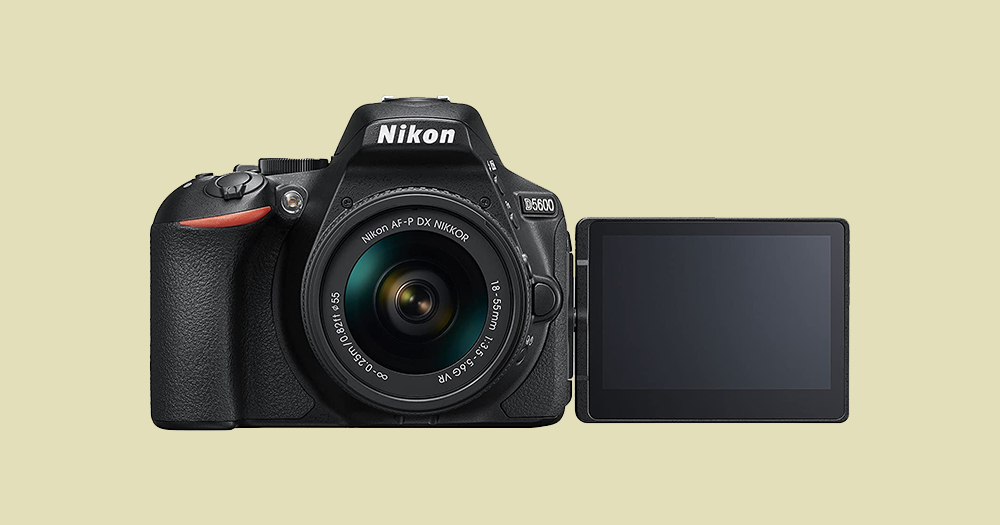 | Nikon D5600 |
| View Price → |
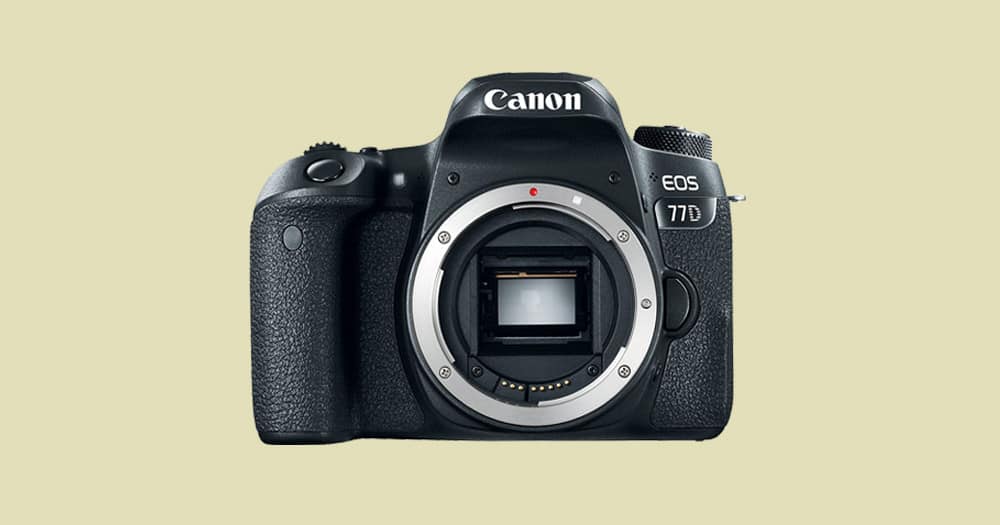 | Canon EOS 77D |
| View Price → |
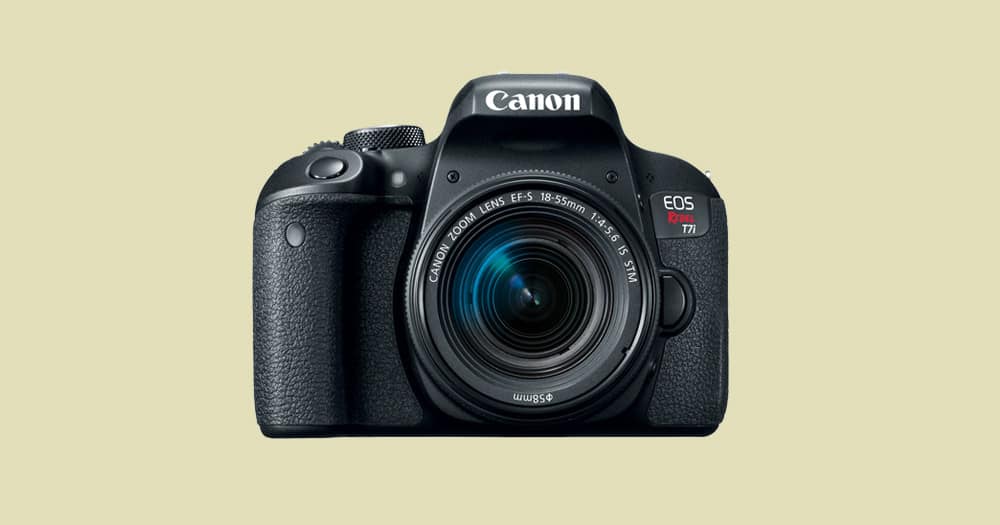 | Canon T8i |
| View Price → |
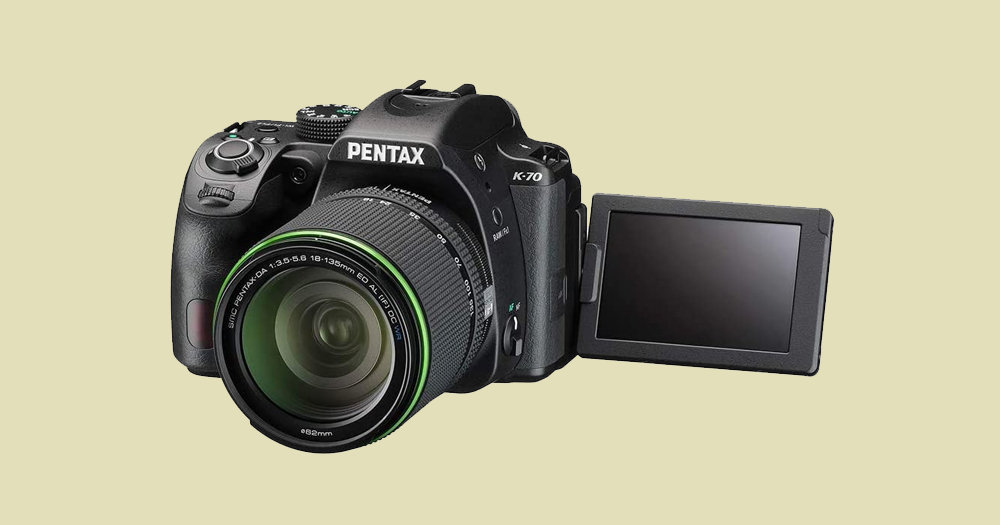 | Pentax K-70 |
| View Price → |
1. Canon EOS Rebel SL3 (EOS 250D)
Camera Type: DSLR | Sensor: APS-C CMOS | Megapixels: 24.1 Lens mount: Canon EF-S | Screen: 3″ vari-angle touchscreen, 1,040,000 dots | Max burst speed: 5fps | Max video resolution: 4K UHD at 25p
- Excellent IQ
- Easy to operate
- High-quality 4k video recording
- Excellent autofocus
- Tilting touchscreen
- Slightly more expensive
This is arguably the best DSLR camera for beginners in 2024.
First introduced in April 2019, the Canon EOS Rebel SL3 is a 24-megapixel sensor entry-level DSLR with an APS-C (22.3 x 14.9 mm ) sized CMOS sensor and Canon EF/EF-S lens mount. (It’s also known as the EOS 250D / EOS Kiss X10 in some countries.)
It isn’t the cheapest entry-level DSLR you can buy, but it’s still our number one recommendation due to its excellent IQ and autofocus performance, all packed into a small, lightweight body.
The fully-articulating touch screen is a joy to use, allowing you to get creative with your compositions. Battery life is above average at approximately 1,070 shots – more than enough for a day’s shooting.
You can shoot at a maximum resolution of 6,000 x 4,000 pixels, allowing you to make great-looking prints. The native ISO range of 100-25,600 can be boosted to 51,200 – handy for low light photography when you don’t have a flash.
The best feature is Canon’s Dual Pixel CMOS AF autofocus, which is fast, easy to use and eerily accurate – it’s nice to see a feature from much higher end Canon DSLRs on this entry-level Canon EOS rebel.
For video-shooters, the maximum resolution of 4K video at 25p provides tons of detail and the flexibility to crop the frame when editing. There’s also WiFi and NFC connectivity, for sharing images on the go.
The Canon EOS Rebel SL3 provides a convenient entrance into the wonderful world of Canon EF-S lenses, which are more numerous and traditionally less expensive than Nikon lenses – we’d recommend buying the Rebel with the Canon EF-S 18-55mm f/4-5.6 IS STM kit lens which offers great flexibility and value for money.
Canon Rebel cameras go from strength to strength, and this one’s the best Canon camera for newcomers.
2. Nikon D3500
Camera Type: DSLR | Sensor: APS-C CMOS | Megapixels: 24 Lens mount: Nikon F | Screen: 3″, 921,,000 dots | Max burst speed: 5fps | Max video resolution: 1920 x 1080
- Best budget option
- Easy to operate
- Great IQ
- Excellent battery life
- No tilt-screen
- Limited point AF system
Launched in August 2018, the Nikon D3500 is a 24-megapixel sensor Nikon entry level DSLR camera with an APS-C (22.3 x 14.9 mm ) sized CMOS sensor and Nikon F lens mount.
It’s not only one of the best entry-level DSLR cameras you can buy in 2024, but it’s also one of the cheapest, making it perfect for students or those looking for a low-cost way to get into photography.
(Willing to invest a bit more? Check out the Nikon D5600 below.)
Don’t be put off by its age – the D3500 offers excellent IQ and numerous useful features, all packed into one of the lightest DSLR camera bodies on the market – just 415g with battery and memory card!
The APS-C CMOS ‘DX’ sensor produces vibrant JPEGs, and 12-bit RAWs with enough tone and colour range to make the most of every pixel, when editing your favourite photo editing software.
Nikon’s EXPEED image processing system ensures that the camera’s auto-focus keeps up with its 5fps continuous shooting speed, and the battery life is an impressive 1,550 shots per charge – the best we tested.
There’s no touchscreen or vari-angle display, which is why we didn’t make this our number 1 choice, but these are the compromises when it comes to such a lightweight and affordable entry-level DSLR.
When shooting with the viewfinder, the 11AF points are clustered in the middle of the screen, but using the focus-recompose method is simple enough, especially with the 18-55mm kit lens. The 5 frames per second shooting speed ensures that nothing it missed.
Live view shooting is equally easy to use, with the contrast-based AF-P autofocus technology helping to lock onto your subject with surprisingly little effort.
The Nikon D3500 offers the best value for money, and allows photographers to take advantage of the entire Nikon DX lens lineup, which includes some excellent entry-level options. Get it with the 18-55mm f/3.5-5.6G VR kit lens, or opt for the 70-300mm if you’re a wildlife shooter.
3. Canon EOS 6D
Camera Type: DSLR | Sensor: Full Frame CMOS | Megapixels: 20.2 Lens mount: Canon EF | Screen: 3″, 1,040,000 dots | Max burst speed: 4.5fps | Max video resolution: 1920 x 1080
- Best IQ
- Robust camera body
- GPS for location tracking
- Access to best-quality lenses
- Hard to find
- Below average frame rate
Launched in November 2012, the Canon EOS 6D is a 20.2-megapixel sensor entry-level DSLR camera with a full-frame CMOS sensor and Canon EF lens mount.
Entry-level doesn’t need to mean you’re limited to just APS-C sensor DSLR cameras – thankfully, the FF sensor Canon 6D is affordable enough to deserve a place on this list.
A Canon full-frame sensor offers better IQ, better low light performance, and greater ability to blur the background than the smaller APS-C format. It also means you’re able to use the exotic Canon red-ringed lenses, with faster apertures and better build quality than their EF-S range.
Despite being rather old and heavier than the other entry-level DSLRs in this review, IQ out of the 6D is top-notch, and there are plenty of great features – remember, this is still a professional photographer’s DSLR.
With an ISO range of 100-25600 (expandable to 102400), the Canon 6D can shoot photos in the dark without a flash much better than the APS-C CMOS entry-level DSLRs recommended here.
The 20.2MP full-frame sensor combined with Canon’s DIGIC 5+ Image Processor produces beautifully detailed and rich JPEG images, and RAW files with lots of latitude during post-processing.
4.5 frames per second continuous shooting speed is more than adequate for most situations, and when shooting JPEG the buffer will fill after around 1250 shots, and around 14 shots when shooting RAW. Battery life is decent at around 1,090 shots.
There’s built-in Wifi for faster image transfer and remote control via Canon’s iOS and Android app, and built-in GPS. Although it does drain the battery much quicker, it’s great to shoot with the GPS enabled while on holiday, and track your photos using Lightroom’s Map functionality when back at home.
If you’re looking for a DSLR with the best image quality, look no further – the Canon 6D will blow you away and is a bargain of a camera. One caveat: it may not be available when you read this! If you find it still in stock, snap it up quickly.
4. Nikon D5600
Camera Type: DSLR | Sensor: APS-C | Megapixels: 24.2 Lens mount: Canon EF-S | Screen: 3.2″ multi-angle touchscreen, 1,040,000 dots | Max burst speed: 6fps | Max video resolution: 1920 x 1080p full HD
- Excellent image quality
- Flip forward LCD touchscreen
- 39 point AF system
- Excellent battery lif
- No built-in AF motor
- Live view not as fast as Canon’s Dual Pixel AF
First introduced in November 2016, the Nikon D5600 is a 24MP entry-level DSLR camera with an APS-C (22.3 x 14.9 mm ) sized CMOS sensor and Nikon F lens mount.
Weighing in at only 465g, the Nikon D5600 is the perfect size to carry around for everyday photography. With a 39 point autofocus system, ISO range of 100 – 25600, 3.2″ articulating screen and built-in wireless, you definitely get a lot for your money.
5 frames per second continuous shooting is good for keeping up with fast-moving subjects, and the camera’s operations feel responsive and snappy, thanks in large part to Nikon’s excellent Expeed 4 processor.
You can shoot at a maximum resolution of 6000 x 4000 pixels, and image quality is impressive – JPEGs look great straight out of camera, and RAW files provide a bit of extra image data for pushing/pulling those shadows and highlights in post-production.
One important feature of the Nikon D5600 is the lack of anti-alias (low-pass) filter, which can help to increase the sharpness and level of detail in your photos.
The standard Nikon F-mount gives you access to over 300 native lenses – even ones dating back to the 1960s!
The articulating LCD touch screen is a pleasure to use and allows you to place your camera on the ground or hold it above your head for some creative compositions. It’s also great for selfies, and for filming yourself in full HD video, YouTube vlogger style!
The Nikon D5600 features built-in Wi-Fi connectivity ( 802.11b/g/n with Bluetooth 4.1 LE and NFC), which lets you transfer your photos directly to mobile devices without any physical connection.
With its NFC feature, it can communicate with smartphones equipped with this technology by simply touching them together! You can also use your smartphone as a remote to control our the camera.
As far as the best entry-level DSLRs go, the Nikon D5600 is hard to beat and represents excellent value for money. Get it with the DX NIKKOR 18-55mm f/3.5-5.6G VR, which is a flexible first kit lens – check out the best Nikon D5600 bundle that currently includes it.
5. Canon EOS 77D (EOS 9000D)
Camera Type: DSLR | Sensor: APS-C CMOS | Megapixels: 24.2 Lens mount: Canon EF-S | Screen: 3″ multi-angle touchscreen, 1,040,000 dots | Max burst speed: 6fps | Max video resolution: 1920 x 1080
- Excellent image quality
- Excellent autofocus
- Excellent battery life
- Useful tilting LCD screen
- Mediocre battery life
- Not weather sealed
Introduced in February 2017, the Canon EOS 77D is a 24MP entry-level DSLR camera with an APS-C (22.3 x 14.9 mm ) sized CMOS sensor and Canon EF/EF-S lens mount. (It’s also known as the EOS 9000D in some countries.)
It features Canon’s impressive Dual Pixel AF system, which improves on AF performance, allowing you to focus on a subject much quicker and track the subject more effectively across your frame than ever before.
If you use Live View a lot, or you’re a video shooter, DPAF is amazing for switching focus points quickly. The 3″ vari-angle touchscreen of the Canon 77D makes this much easier – you’re able to slide your finger from one point to another, to ‘rack’ focus in a smooth fashion.
The Canon 77D specs are quite packed as well for a camera of this price point.
It’s great being able to use all the two-finger gestures you’re used to from your smartphones on the LCD screen of the 77D. It offers a 45-point autofocus system with all cross-type points, greatly increasing its ability to focus in low light.
Having lots of focus points isn’t all that important on an entry-level DSLR, but if you’re trying to track movement (sports photography, wildlife photography, etc.), more focus points mean more chance of getting a sharp photo.
Other features include Wifi, Bluetooth and NFC for fast image transfer and remote control, twin control dials for easy one-handed shooting, a top plate LCD screen for quick reference, built-in interval timer for time-lapses, eye-sensor to turn off the read LCD while shooting, mic port for audio recording, 6 frames per second continuous shooting and great image stabilization during video recording.
The Canon 77D is one of the best DSLRs for shooting video – the features mentioned above, coupled with dual AF and the rotating touch screen makes this a very popular camera for vloggers -this is one of the only entry-level DSLRs that offer easy and dependable autofocus while shooting video.
Image quality is superb, with beautiful skin tones as you can expect from a Canon sensor, and 24MP is more than enough to print large photos or crop while editing.
6. Canon EOS Rebel T8i (EOS 850D)
Camera Type: DSLR | Sensor: APS-C | Megapixels: 24 Lens mount: Canon EF-S | Screen: 3″ multi-angle touchscreen, 1,040,000 dots | Max burst speed: 7.5fps | Max video resolution: 1920 x 1080
- Great image quality
- Excellent autofocus
- 45 AF points
- Vivid tilting touchscreen
- No articulating screen
- Poor battery life
Introduced in February 2020, the Canon EOS Rebel T8i is a 24MP entry-level DSLR camera with an APS-C (22.3 x 14.9 mm ) sized CMOS sensor and Canon EF/EF-S lens mount. (It’s also known as the EOS 850D or Kiss X10i in some countries, and is a newer model of the Canon EOS Rebel T7i.)
With the tried and tested 24.2 Megapixel CMOS (APS-C) Canon Rebel sensor and newest DIGIC 8 Image Processor, image quality and overall speed is impressive for a Canon EOS Rebel camera.
JPEG images straight out of the camera are vibrant and detailed, and skin tones have a beautiful warmth to them that’s become associated with Canon sensors.
Overall the build quality is nice on the Canon T8i. It’s definitely a smaller build than most DSLRs which could be a big bonus if you like to travel or walk around with a lighter camera.
The articulating, touchscreen LCD is a great feature, and thanks to Dual Pixel AF and face recognition, focusing in Live View is a breeze. Being able to tap your subject and have your camera focus on them in a split second is something that formerly only mirrorless cameras could do.
The T8i can track subjects around the frame just as well in Live View mode then it can when you’re looking through the viewfinder, which is perfect if you just want to tap the LCD screen and have the camera follow your child at they run around.
For video shooters, having those extra AF points spread further over the frame will help keep your moving subject in focus. It’s a nice little upgrade from its predecessor, the Canon EOS Rebel T7i (see best bundle deal).
The kit lens that comes bundled with Canon Rebel cameras is a standard 18-55mm offering, allowing you to shoot at an approximate field of view of 28mm at the wide end, and 88mm at the long end.
7. Pentax K-70
Camera Type: DSLR | Sensor: APS-C | Megapixels: 24 Lens mount: Canon EF-S | Screen: 3″ vari-angle touchscreen, 921,000 dots | Max burst speed: 7.5fps | Max video resolution: 1080p
- Great IQ
- Good low light performance
- Image stabilization
- External mic jack
- Poor battery life
- Rather heavy for a starter camera
Introduced in June 2016, the Pentax K-70 is a 24MP entry-level DSLR camera with an APS-C (22.3 x 14.9 mm ) sized CMOS sensor and Pentax KAF2 lens mount.
Pentax may not be front of mind when shopping for a new DSLR camera, but the K-70 is worthy of consideration, particularly if you’re struggling to decide among so many best Nikon and Canon DSLR camera bodies!
With its 3″ fully articulated screen, 6 fps continuous shooting speeds, 100 – 102400 ISO range and built-in wireless functionality, it’s much like the other camera models on this list.
However, the K-70 stands out in a number of ways, with its rather unique feature-set, starting off with a robust, weather-sealed body, ready to tackle the elements – just make sure you pair it with a weather-sealed lens.
Then there’s the special High-Resolution mode, where the camera takes multiple images of a scene while moving its sensor using the sensor-shift image stabilization system, and combines them automatically to create a much higher resolution image – perfect for printing enlargements.
The K-70 is also the only DSLR in this guide to offer sensor-based image-stabilization, meaning that all Pentax lenses will be stabilized down to 4.5 stops when attached to the camera body.
100% viewfinder coverage is also rare at this price point, meaning that what you see in the viewfinder while shooting will match exactly what you get in your image. This helps enormously with framing your photography compositions.
Battery life is below average at only 410 shots, but thankfully spare batteries aren’t expensive.
The AF system offers 11 focus points, with 9 of them the more accurate cross-type sensors. The k-70 also features face detection AF, which intelligently detects faces in a scene, and locks the focus automatically – this is immensely useful when photographing children.
Another unique feature is the Astro Tracer mode, where the camera uses its GPS and sensor-shift mechanism to track the motion of the stars to creates a long exposure image without visible star trails. This makes K-70 one of the best cameras for Astrophotography.
All in all, the K-70 is a unique camera and the best value for money in 2024. We recommend getting it with the 15-55mm or 18-135mm kit lens.
How to Choose an Entry-Level DSLR Camera
Let’s first answer this question: What is an entry-level DSLR? Most would say it’s the cheapest DSLR that a camera manufacturer offers.
I’d like to improve on this definition by saying that it’s one that appeals to first purchasers, or photographers who want simplicity.
These cameras typically won’t have every bell and whistle of more expensive or newer camera models, but this isn’t an important consideration for the buyer.
The best entry-level DSLR cameras of 2024 aren’t necessarily the newest models, since this is where the real bargains lie.
Professional photographers may leap at every new camera release no matter the cost, but everyone else can take huge advantage of discounted older models – these DSLRs offer great bang-for-the-buck to consumers today.
What to look for in entry-level DSLRs
- Value for Money – Spending around $500 is a good place to start. Any less than this and the image quality may not be better than your smartphone. Between $500 and $1,000 is where the best models exist, so try and stretch your budget a little to invest in something that you can use for years to come. Remember that you don’t need the latest model.
- Interchangeable Lenses – DSLRs by their nature offer multiple lens options. This gives you flexibility and opens new doors to creativity in your photography.
- Ergonomics – DSLRs offer better ergonomics than compact cameras. Models at this price point are often small and lightweight, but make sure they fit your hand well. The Nikon D560, Nikon D3500 or Canon EOS Rebel series are good in this respect.
- Image Quality – in general, the more you spend up to around the $1,500 mark, the better the image quality will become. Above this amount, there’s diminishing returns. Opt for a full-frame sensor for the best IQ and low light performance.
- Autofocus – don’t worry too much about the what point autofocus system the camera offers – it’s more important to get a camera with fast AF performance. The Canon EOS Rebel series do well here, thanks to Dual-Pixel AF.
- Battery Duration – depending on how long you expect to shoot for before recharging (or how many spares you want to carry), the life of the battery can be an important consideration, particularly when travelling.
- Video – 4k video is a nice option for a camera, but it’s not essential to most photographers. 4k video also takes up more space on your memory cards, and requires a powerful computer to edit. All the cameras in this guide have full HD video, with only the Canon EOS Rebel SL3 offering 4k video.
- Connectivity – having built-in Wifi is a nice feature to have, particularly in this day and age of spontaneous sharing of images on social media. Built-in Wifi also allows you to control your camera remotely, perfect for selfies or group shots.
- Continuous Shooting – aka burst mode. Useful for capturing fast-moving action, such as photographing birds in flight.
Why Buy a DSLR Camera in 2024?
There are plenty of types of camera to choose from here in 2024 – everything from mirrorless to instant, not to mention the various sensor sizes in between.
Despite the huge popularity of mirrorless cameras with both amateur and professional photographers, there’s still millions of people around the world using DSLRs.
Manh believe that mirrorless cameras have killed DSLRs, but this isn’t totally true – you should definitely still consider buying one to advance your photography hobby or even build your career.
For many, DSLRs offer a real photography experience. Everything from the Optical Viewfinder (OVF) to the shutter sound to the camera grip – it just feels better than the average mirrorless camera.
DSLRs at this price point typically offer much better ergonomics than mirrorless models, with more pronounced grips and manual dials and buttons with tactile feedback.
While shooting with an LCD screen and Electronic viewfinder (EVF) may be fun, with an OVF, you’re getting a what-you-see-is-what-you-get representation of the world. You’re basically looking through a piece of glass, as opposed to looking at a mini screen.
DSLRs may not be the most modern way to take a photo, but for many photographers, only a DSLR will do.
APS-C Sensor or Full-Frame?
With only one full-frame (FF) camera recommendation in this guide (the Canon 6D), you may be wondering whether it’s a wise investment to make.
FF cameras are intended to be used by serious amateurs (some call them ‘prosumers’), wealthy hobbyists, or professionals.
The photography term: ‘Frame frame’ refers to a camera with a 35mm image sensor (36 mm × 24 mm. It’s the largest consumer format you can buy.
Addressing the elephant in the room, FF cameras are expensive – multiple times more than crop sensor cameras.
So, what do you get for all that extra money?
- Better image quality – a bigger sensor means more image data can be captured. This translates to more tonal range and depth to your photos.
- More dynamic range – you’ll be able to do more with your RAW files when editing them on your computer.
- Access to better lenses – faster prime lenses and specialist tilt-shift, macro, and other forms of lenses are more abundant. They’re also way more expensive!
- Better low-light capabilities – the ability to shoot at higher ISOs with less noise.
- ‘Real’ focal length – with no crop factor to contend with, a 35mm lens will gve you a 35mm field of view.
- Wider angles – with no crop factor, wide-angle lenses are as wide as intended.
- Shallower depth of field – wider aperture lenses and a larger sensor mean greater ability to create a bokeh background (i.e. .
- Better build – typically, although some high-end APS-C cameras offer robust bodies too.
All the above features are nice to have, and may even be essential depending on the type of photography you intend to shoot.
Most professional photographers need FF cameras, but perhaps they’re overkill for you – only you can decide.
Make no mistake – all the models listed in this guide are equally capable of producing a great image, and no one will be able to tell if you used a FF camera or one with an APS-C sensor!
Should you Buy a starter DSLR with a Bundle?
Due to their budget prices, many entry-level cameras are aimed at first-time camera buyers. As such, you’ll often see these models bundled together with several DSLR accessories, such as filters, tripods, bags, lens cleaners, battery chargers, memory cards… everything but the kitchen sink!
(This is especially the case on Amazon, where we usually recommend you buy your camera gear.)
While it might be tempting to buy everything all at once for what looks like a great price, I’d recommend you think before hitting that Add to Cart button.
Most of the accessories included in classic bundles are of poor quality, or available elsewhere for a low price. In addition, many of the accessories you may never need.
With photography, starting simple is best. Don’t go out and buy tons of camera accessories just because you think you need them all.
Over time, you’ll understand what exactly you need – then it’s best to invest in each particular gadget and gizmo, once you’ve done adequate research.
At the bare minimum, you need to buy a lens and a memory card when purchasing your starter camera – without both these things, you can’t take any photos!
I’d recommend a couple of 32GB or 64GB cards and the kit lens that comes bundled with your camera.
What about Kit Lenses?
Kit lenses get a lot of flak from professional photographers, mostly due to their cheap construction and low prices.
However, if you’re just starting out with photography, there’s absolutely nothing wrong with buying a camera with a lens included.
These bundled lenses will usually be 18-55mm, i.e. wide-angle to standard focal length. This is ideal to experience a range of useful focal lengths in one compact lens, giving you a feel for what preferences you may have.
There are many types of lenses available for your chosen camera, but a kit lens offers a nice introduction.
All the models recommended in this guide are available to buy with an included lens. Most of them offer a zoom lens in addition to the 18-55mm, which is also worth considering if you shoot subjects from a distance.
After you’ve experimented with the kit lens for a while, you may feel like trying something else. In this case, I’d recommend the next lens you buy is a ‘nifty-fifty’.
These are small, lightweight and surprisingly affordable 50mm lenses that are available from all the main camera brands. They offer a faster f/1.8 maximum aperture, allowing you to blur the background and shoot in lower light.
What about the Camera Brand?
Nikon vs Canon vs Sony vs Fujifilm… Pentax… Olympus… Leica… choosing a brand for your first camera can be tough!
In this guide, Canon DSLRs have dominated, simply because there are far more models available to consumers in this niche.
Nikon is second most numerous, and Pentax here is the outlier.
These days, there really isn’t much difference between the main camera brands (i.e. Canon and Nikon). Both produce excellent starter cameras, and both offer a wide ranger of accessories and lenses.
Canon still offers more lenses (especially specialist ones), but you’re not likely to attach any of these to any of the DSLRs on this list.
Prices are also very similar, so it all comes down to personal preference. I started my photography journey with a very basic Nikon D40, and I absolutely loved it!
This started off a 5-year relationship with Nikon, until I finally switched to Sony. I also use Fujifilm, and dabble occasionally with other brands too.
All this to say: don’t worry too much about which brand you choose! Whatever the camera, you’ll be able to take a great photo – invest in your education, and learn how to use your camera properly.
Final Recommendations
With so many great options on the market here in 2024, it’s hard to recommend an absolute best camera.
The truth is, all the entry-level DSLR cameras in this guide are excellent cameras and provide great value for money.
There are definitely some bargains to be had if you shop for an older model, but by investing in something more up to date, you’re future-proofing yourself.
Camera technology moves fast, after all…
Our number one pick is the Canon SL3, and the Nikon D3500 in close second place as a more affordable option. If you’re willing to try something different, the Pentax K-70 is truly unique and packs some features not seen elsewhere.
Above all, think about what lenses you need – once you decide on Nikon, Canon, Pentax, or any other DSLR camera brand, you’re part of that ecosystem, so choose wisely!
What is the best entry-level DSLR camera for you? Leave your comments below.

Small, lightweight, feature-packed DSLR that's perfect for those on a budget who need a high quality camera to grow with. Easy to use and excellent value for money.








